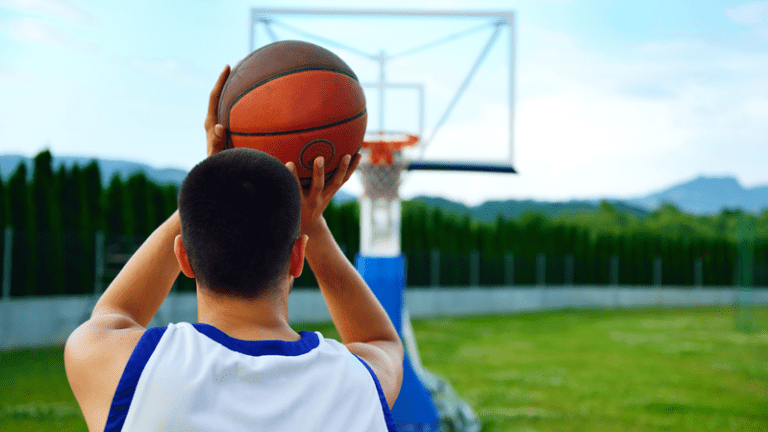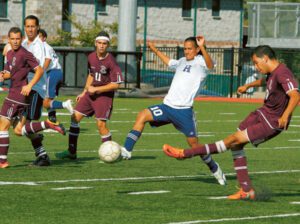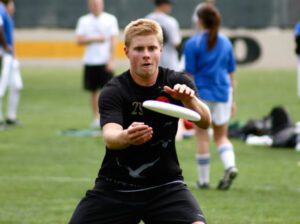Nikolai Bernstein was a self-taught Soviet Neurophysiologist working behind the iron curtain in the USSR. Although he died in relative anonymity in 1966 and never won any prestigious awards, his academic work has had an enormous influence on athletic development.
I’ll be honest, I don’t claim to know much about Bernstein. I’ve never read any of his papers, or studied his experiments. However, he coined one phrase that has stuck with me. “Repetition without repetition.”
“Repetition without repetition” is a reminder for me not to engage in rote, repetitive practice. While it’s crucial to get repetitions, once you’ve developed a base level of proficiency, it doesn’t make sense to repeat the exact same movement pattern over and over again.
(Note: if you are focusing on changing technique, or changing a bad habit, static repetition is important in order to develop the neural pathway for your desired movement. Additionally, for less advanced players, repetitive practice is important when building skills and fundamentals.)
To highlight the ineffectiveness of repetitive practice for advanced players, let’s use an example:
Let’s imagine you’ve practiced shooting a 1 dribble pull up for a few years. After many, many repetitions, you’ve acquired the skill of shooting a 1 dribble pull up. At this point, repeating that move in the exact same manner will result in limited improvement and limited transfer to the game. The reason for this is because basketball is a dynamic and open sport.
When you shoot a 1 dribble pull up in a live game situation, it’s because you’re responding to the environmental demands. And each time you shoot it, the environmental demands are different.
Example 1) Your on-ball defender bites on a pump fake and you’re able to blow by him. But a help side defender steps up, and you’re forced to pull up rather than get all the way to the basket.
Example 2) You shake your on-ball defender with a jab step and start to attack the basket. But your defender turns his hips and sprints to catch up. Reading that body positioning, you stop on a dime and pull up to shoot.
For each of the examples above, your body movements will be slightly different. For example 1, you might take a small, quick step into your shot so you don’t get too close to the help side defender. For example 2, you might drop your shoulders and take a long stride to sell that you’re going to go all the way to the basket before you pull up. Both examples are a 1 dribble pull up but each one is unique because of the context in which it’s being used.
The success of a 1 dribble pull up depends on more than simply being able to execute the skill in a static environment. It depends on being able to respond appropriately to the environmental constraints you face–and each environmental constraint is unique and requires a different solution.
If you’ve only trained to shoot one generic type of pull up jumper, you won’t be prepared for these slight differences that occur in game situations. This is why it’s important to remember “repetition without repetition” when you train.
Your Most Powerful Training Tool
Ok, that’s great in theory, but how do we actually go about training for all these possible environmental constraints?
In an ideal world, we’d all have a live defender (or group of defenders) at our disposal for every training session. We could organize the defense however we wanted to create the environmental context we are practicing.
In real life, however, we often have to workout on our own or without defense. In this case, the best tool you have at your disposal is your imagination.
Additional Reading: Use a Vivid Imagination to Supercharge Your Training
Let me be clear, by imagination, I don’t mean daydreaming. I mean intense, focused, life-like visualizations.
For example, If you’re doing a drill where you have to make 10 pull ups, imagine different situations where you might use a pull up. For each repetition, imagine the defense turning their hips to sprint, or that you’re wide open to shoot, or that a good contest forces you to quicken your release slightly.
These are the types of contextual clues that will influence the actual movement you make in the game and thus, are important to include in your practice. By using your mind to imagine detailed scenarios, you can better prepare for game situations when they arise.
Don’t get me wrong, repetitions are vital to success. You need to shoot thousands of shots in order to become a great shooter. However, once you build a foundation of skill, those repetitions are made much more effective when they aren’t repetitive.
For every basketball move (excluding free throws), there are an infinite number of minute variations. You can…shoot with a quick release, shoot moving slowly to your left, shoot moving quickly to your left, change speeds when you dribble, dribble wide and away from your body, dribble close to your body and low to the ground, take long strides, take short strides, move sideways, attack north-south, lean into your imaginary defender, finish high off the backboard, scoop the ball up from your weak side hip, cuff the ball like a running back while going through the lane…I could go on forever.
The point is this: to best prepare for live situations, eliminate repetitive and robotic practice from your training. Leverage the power of your imagination to visualize defense to enhance your training. If you have any trouble remembering this, just remember Bernstein’s advice “repetitions without repetition.”
How useful was this post?
Click on a star to rate it!
Average rating 5 / 5. Vote count: 2
No votes so far! Be the first to rate this post.



